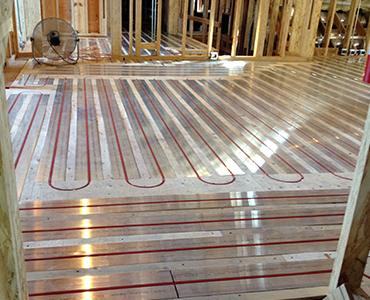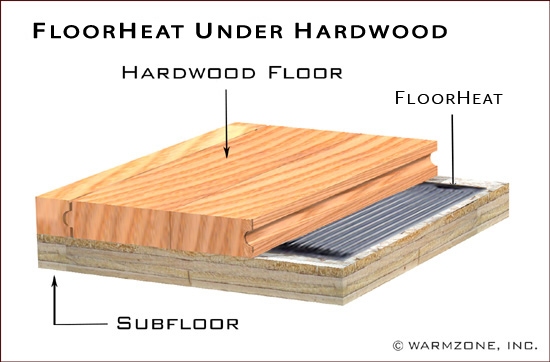The Battle of the Home Heating Titans
For years baseboard heating has been the home heating system of choice for many consumers. Relatively cheap and easy to install, baseboard heating systems were installed in new homes in the 70s, and without knowing their other options, consumers have stuck with it—until now.
Radiant heated floors are quickly trumping baseboard heating as the titan of the home heating market. With its superior heating capabilities and maintenance-free logistics, radiant heating is persuading consumers everywhere to make the switch from baseboard heating to radiant heating.

By taking a look at how the two different systems work and their pros and cons, you’ll quickly see that saying goodbye to baseboard heating is the best decision you’ll ever make as a homeowner.
Weighing the Differences
While both baseboard heating systems and electric radiant heating systems use similar concepts, they are certainly not created equal.
Efficiency: Baseboard heaters aren’t exactly known for their efficiency. Heating a whole room with a baseboard heater can take quite a while, so you have to plan ahead if you want the room to be warm when you’re home. Because they take so long to heat up, baseboard heaters can quickly rack up your electricity bill.
Because electric radiant floor heating heats the floor and the objects around it, it takes half the time to heat up a room. Radiant floor heating is 100 percent effective, even at 50 percent capacity. Additionally, 100 percent of energy consumed by your radiant heating system is used to heat the room.
Installation: Baseboard heaters are relatively easy to install, but you have to waste a large amount of wall space to do it. What’s more, baseboard heaters are quite unsightly and noisy, and they must be strategically placed as to not conflict with furniture placement.
While heated floors require a little more elbow grease to install, it’s not difficult. Any motivated do-it-yourselfer can install heated floors. Additionally, radiant heated floors require no wall space, and you don’t have to worry about an unsightly heater sticking out of your wall. After all, what’s a warm room if it’s an ugly room?
Maintenance: Baseboard heaters use heat coils that need to be frequently vacuumed. Dust on the coils reduces the effectiveness and efficiency of the heater, taxing your heating bill and reducing the lifespan of the system in general. What’s more, a dirty heater makes your house smell like burnt dust—not the most pleasant smell in the morning.
Radiant heated floors require absolutely no maintenance. It’s as simple as that. There are no moving parts or coils to clean, and with the high-quality heat cable and thermostat, you can count on your floors to provide warmth for years to come.
Safety: Consumers with baseboard heating systems must take great care to keep furniture and other objects away from the heater. This not only interferes with design decisions, but also presents a serious safety hazard. A home in Colorado was destroyed after two suitcases leaning against a baseboard heater ignited, causing $50,000 in damages.
Radiant floor heating is guaranteed to be safe. The heating cable used is safely insulated and uses no high voltage, no combustible gases, and doesn’t create any hot surfaces.


